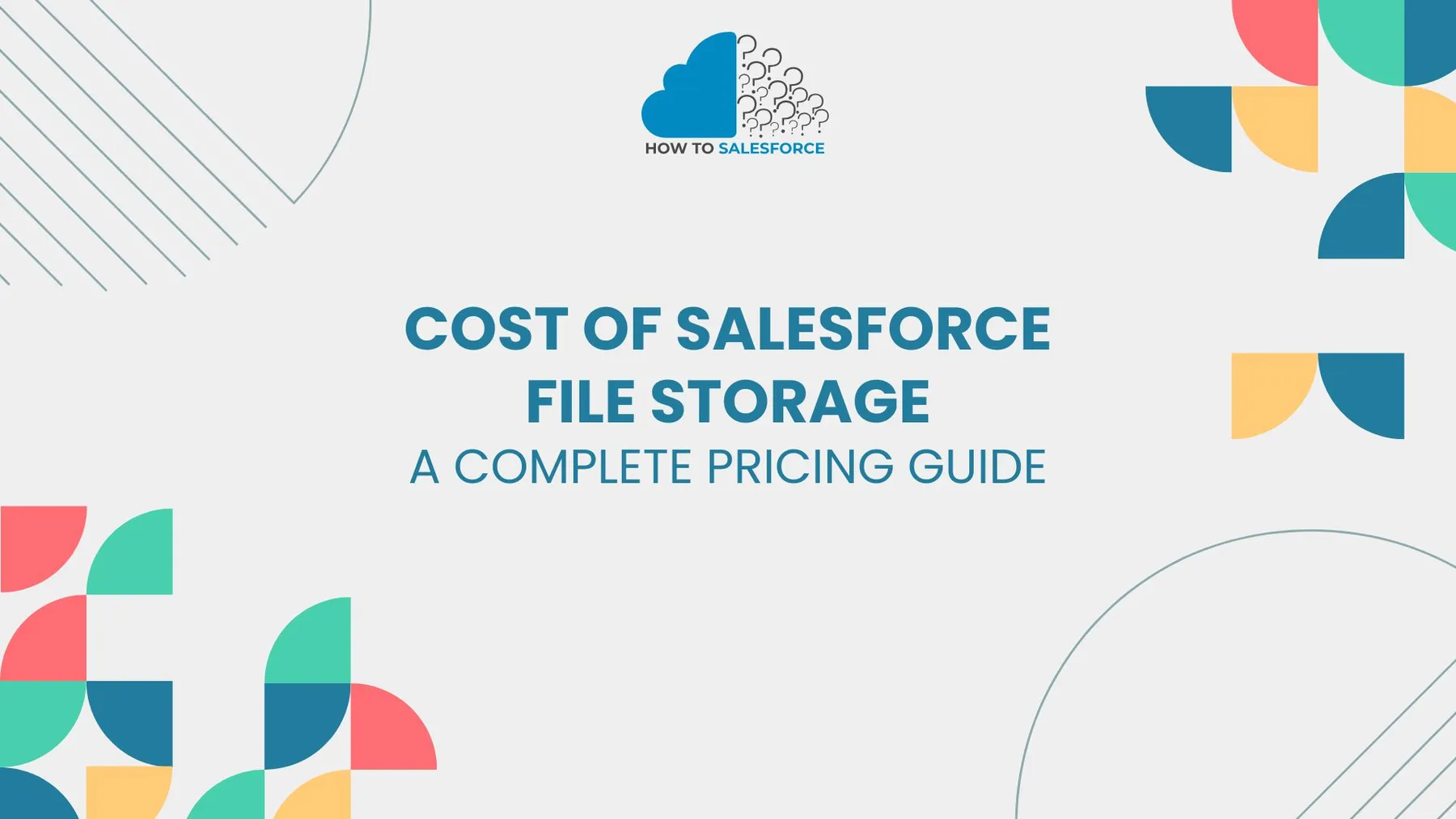Salesforce file storage plays a crucial role in managing data within the platform. Understanding the cost of Salesforce file storage can help businesses budget effectively and ensure they use their resources wisely. This blog explores the cost structure, factors affecting costs, and how to manage file storage efficiently.
Please read my other blog: Salesforce Interview Questions for Tech Lead
Understanding Salesforce File Storage
Moreover, Salesforce file storage refers to the space used for storing files, documents, and attachments. Salesforce provides different storage options, including file storage and data storage. Understanding the distinction between these options is essential for effective resource management.
Types of Storage
Salesforce offers two main types of storage:
- Data Storage: This includes records like accounts, contacts, and leads. It primarily holds structured data.
- File Storage: This covers documents, images, and attachments. These files often accompany records within Salesforce.
Cost Structure of Salesforce File Storage
Firstly, the cost of Salesforce file storage is based on usage. Businesses must monitor their file storage to avoid unexpected charges. Salesforce typically provides a certain amount of storage included in the subscription.
Pricing Details
Salesforce has a tiered pricing model for file storage. Here’s a breakdown of the costs:
- Included Storage: Each Salesforce organization gets a specific amount of file storage based on its edition. For example, Essentials and Professional editions usually include a limited amount.
- Additional Storage Costs: Organizations can purchase additional storage. The pricing usually varies based on the number of gigabytes needed.
Current Pricing Model
As of now, Salesforce charges approximately $0.10 per gigabyte for additional file storage. This pricing may vary depending on the contract or specific agreements. Always check the Salesforce website or contact your account representative for the most accurate information.
Factors Affecting Salesforce File Storage Costs
Several factors can influence the total cost of Salesforce file storage. Understanding these factors can help businesses manage their storage needs effectively.
Edition of Salesforce
The edition of Salesforce your organization uses affects storage limits. For example, Enterprise and Unlimited editions typically provide more included storage than Essentials. Thus, organizations should evaluate their edition’s limits to determine their needs.
Data Growth: Cost of Salesforce File Storage
As your business grows, so does the amount of data stored. Increased customer interactions, documents, and files can quickly consume storage space. Therefore, organizations must project future growth to anticipate storage needs.
File Types and Sizes
Different file types occupy different amounts of storage. For instance, high-resolution images and videos take up more space than text files. Consequently, organizations must manage file types to optimize storage usage.
Managing Salesforce File Storage Efficiently
To minimize costs, businesses should adopt strategies to manage Salesforce file storage effectively. Here are some best practices to consider:
Regular Audits: Cost of Salesforce File Storage
Moreover, conduct regular audits of your file storage usage. This helps identify large files or unnecessary documents that can be deleted. Regular reviews ensure that you use your storage effectively.
Use External Storage Options
Consider integrating external storage solutions. Services like Google Drive or Dropbox can help offload files from Salesforce. This reduces storage consumption and can lower costs.
Implement Data Retention Policies
Establish data retention policies to manage file storage. Determine how long files should remain in Salesforce. This practice ensures that unnecessary files are removed regularly.
Optimize File Types: Cost of Salesforce File Storage
Use file formats that consume less storage space. Compressed image formats, for instance, can save space. Always choose efficient file types when uploading documents.
Understanding File Storage Limits
Salesforce imposes limits on file storage based on the edition you use. Understanding these limits is crucial for effective management.
Edition Storage Limits
Here’s a quick overview of file storage limits by edition:
- Essentials: 10 GB
- Professional: 10 GB + 2 GB per user
- Enterprise: 20 GB + 2 GB per user
- Unlimited: 20 GB + 2 GB per user
Monitoring Storage Usage
Salesforce provides tools for monitoring storage usage. The setup menu includes a storage usage section. This section allows administrators to track file and data storage limits.
Cost Implications of Exceeding Limits
Exceeding your storage limits can lead to additional costs. Salesforce may charge for the extra storage needed. Thus, organizations must monitor usage to avoid unexpected charges.
Consequences of Overages
If you exceed your limits, Salesforce may prevent users from uploading new files. Consequently, this can impact productivity and operations. Regular monitoring helps avoid these situations.
Alternatives for Managing File Storage Costs
Furthermore, to reduce costs, businesses should consider alternative storage methods. Here are some strategies to consider:
Using Salesforce Content Delivery Network (CDN)
Salesforce provides a content delivery network for efficient file hosting. This can help offload some storage needs. By utilizing the CDN, you can reduce the strain on your file storage limits.
Archiving Old Files: Cost of Salesforce File Storage
Regularly archive old files that are not frequently accessed. Archiving helps free up valuable space. Additionally, it helps keep your active file storage organized.
Educating Users
Train users on file management best practices. Educating your team can help minimize unnecessary uploads. Implementing guidelines ensures users understand the implications of file storage.
The Importance of Data Quality: Cost of Salesforce File Storage
Managing file storage goes hand in hand with maintaining data quality. Poorly managed data can lead to unnecessary storage consumption. By focusing on data quality, organizations can ensure efficient storage usage.
Regular Data Clean-up
Schedule regular data clean-ups to remove duplicates and outdated records. Keeping your data clean minimizes the amount of unnecessary storage used.
Enforce Naming Conventions
Furthermore, establish clear naming conventions for files and documents. This can help users identify relevant files easily. It also streamlines the process of organizing and retrieving information.
Integrating Third-party Applications
Additionally, salesforce allows integration with various third-party applications. These integrations can enhance file management capabilities.
Document Management Systems
Integrate document management systems that offer advanced features. This can provide enhanced organization, search capabilities, and file retention policies.
Automated Workflows: Cost of Salesforce File Storage
Implement automated workflows for file management. Automation can help streamline processes like file archiving and data clean-up.
Conclusion
To sum up, the cost of Salesforce file storage can significantly impact your organization’s budget. Understanding the pricing structure, storage limits, and factors influencing costs is essential. By managing storage efficiently, organizations can optimize their use of Salesforce. This will lead to better data management and reduced expenses.
Ultimately, being proactive in monitoring and managing file storage can help organizations avoid extra costs. Implementing best practices will ensure that you maximize the value of Salesforce while keeping expenses in check. Understanding the cost of Salesforce file storage is crucial for long-term success.


